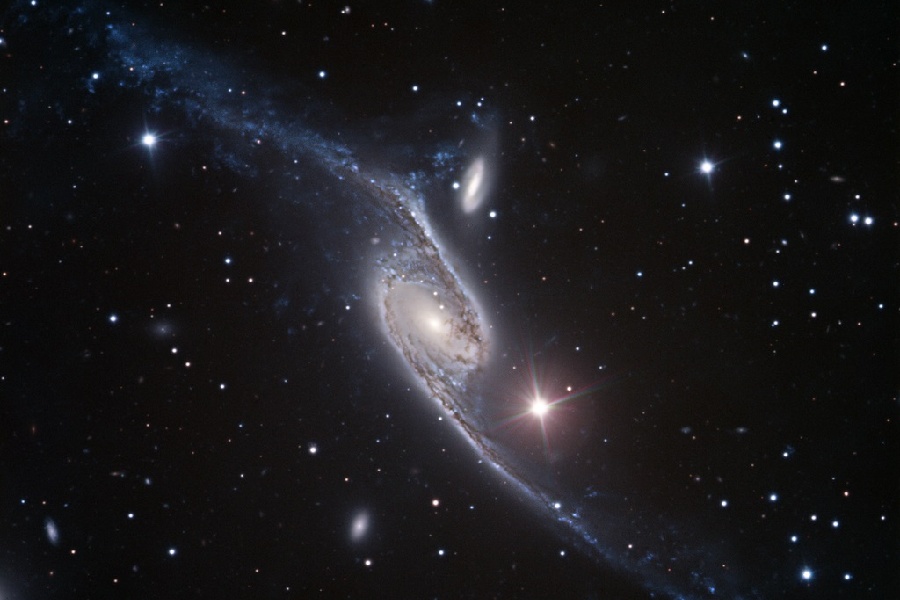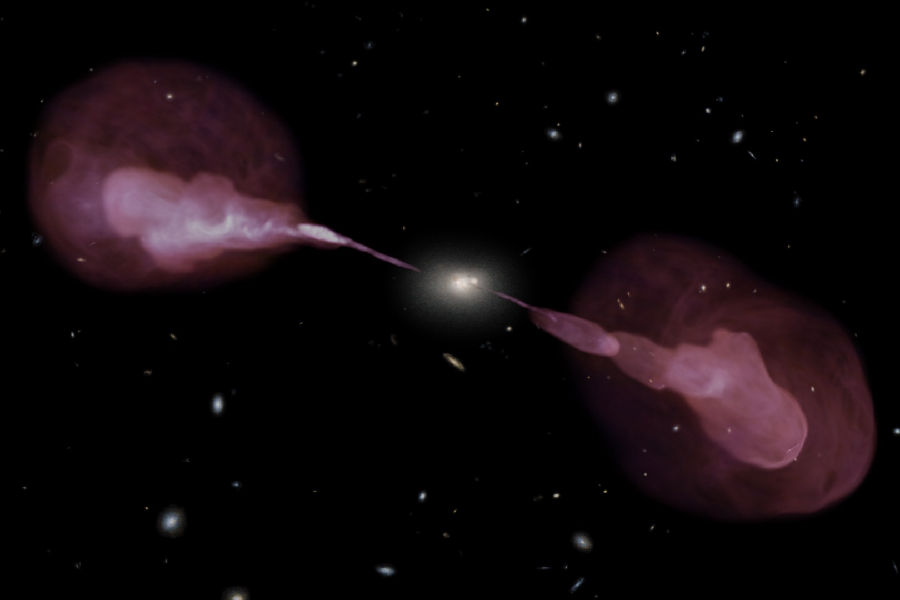Galaxies are truly massive entities in the universe. These colossal island universes are home to billions of stars and untold mysteries. The Milky Way, our home galaxy, is a typical spiral galaxy containing hundreds of billions of stars, including our Sun. But what are the largest galaxies in the universe?
Through this article, we explore the grandeur and intricate details of these huge cosmic structures. We’ll dive into the mind-boggling sizes they possess, dwarfing even our own Milky Way Galaxy, and unveil the incredible distances they span.
Join us as we push the boundaries of our understanding, venturing into the realms of the largest known galaxies!

What Are the Largest Galaxies in the Universe?
The largest galaxies in the universe are giant elliptical galaxies, which can have masses equivalent to trillions of stars and stretch across hundreds of thousands of light-years. Examples include IC 1101 and Messier 87 (M87).
Typically found at the centers of galaxy clusters, these massive structures are thought to have formed through the merger and accumulation of smaller galaxies over billions of years. They exert gravitational influence on their surroundings and shape the universe’s evolution on a grand scale.
IC 1101 – A Cosmic Heavyweight Among Elliptical Galaxies
IC 1101, a colossal elliptical galaxy, fascinates astronomers due to its enormous size and mass. It sits 1.04 billion light-years away within the Abell 2029 cluster, offering valuable clues about how galaxies form and change over time.
Scientists employ advanced telescopes to examine IC 1101’s characteristics, and upcoming observations can reveal further insights about this celestial behemoth. In essence, IC 1101 stands as a testament to the immense scale and enigmatic nature of the universe, beckoning exploration and discovery.
Structural features
IC 1101 stands out as a true cosmic giant, shaped like an ellipse rather than having spiral arms like our Milky Way. Its vast size is remarkable—it spans 6 million light-years, much larger than our own galaxy, which is only 100,000 light-years across.
What’s particularly striking about IC 1101 is not just its size but also its density and gravitational pull. It’s so massive that it dominates the galaxy cluster it belongs to, with smaller galaxies orbiting around it due to its immense gravitational force.
So, is IC 1101 the largest galaxy in the universe? While IC 1101 is definitely one of the largest galaxies we know of, it might not hold the absolute top spot.
Alcyoneus: The Cosmic Leviathan
Among the largest known galaxies in the cosmos is Alcyoneus, a gigantic radio galaxy recently discovered by astronomers using the Low-Frequency Array (LOFAR). Located 3.5 billion light-years away, Alcyoneus stretches an incredible 16 million light-years across. This makes it the largest single galaxy structure ever identified.
Its vast radio lobes dwarf those of other giant radio galaxies like 3C 236. Remarkably, the central host galaxy itself is relatively ordinary, begging the question of how such an extreme system could form.
Alcyoneus is named after the giant of Greek mythology. It stands as a cosmic leviathan challenging our understanding of galaxy evolution and structure formation in the universe.

Hercules A – The Second-Largest Elliptical Galaxy
Hercules A, a massive elliptical galaxy, resides in the constellation Hercules. It is renowned for its extraordinary size and distinctive properties.
Hercules A is the world’s second-largest known elliptical galaxy, surpassed only by the galaxy IC 1101. This cosmic giant has captured the attention of astronomers worldwide.
Its immense size and unique features provide valuable insights into the formation and evolution of galaxies. Studying Hercules A helps us unravel the mysteries of the universe and understand the complex processes that shape these colossal structures.
Structural features
At the heart of Hercules A lies a supermassive black hole. This black hole is one of the most massive ever discovered, with a mass billions of times greater than our Sun. The immense gravitational pull of this cosmic behemoth powers an extraordinarily bright active galactic nucleus (AGN).
The AGN of Hercules A is one of the brightest known in the universe. It is a strong source of radio emissions, with colossal radio jets extending far beyond the galaxy’s visible boundaries. These jets, powered by the supermassive black hole, showcase the incredible energy output of this galactic giant.
A2261-BCG – Third-Largest Elliptical Galaxy
A2261-BCG is another cosmic titan located in the galaxy cluster Abell 2261. It holds the title of the third-largest known elliptical galaxy in the universe. Like Hercules A, A2261-BCG is a marvel of galactic proportions, captivating astronomers with its immense size and intriguing properties.
This elliptical galaxy is a dominant member of its galaxy cluster. Its gravitational influence shapes the surrounding cosmic landscape, attracting smaller galaxies and governing the dynamics of the cluster. Studying A2261-BCG provides valuable insights into the formation and evolution of galaxy clusters.
Structural features
One of the most striking features of A2261-BCG is its extended stellar halo. This diffuse halo of stars extends far beyond the galaxy’s visible boundaries, encompassing a vast region of space. The presence of such an extensive stellar halo suggests a complex history of galactic mergers and interactions.
A2261-BCG also harbors a supermassive black hole at its core. Although not as massive as the one found in Hercules A, this black hole still significantly influences the galaxy’s structure and evolution.
The interplay between the supermassive black hole and the surrounding galaxy is a subject of intense study. Astronomers seek to unravel the mysteries of these cosmic giants.
Observational Techniques to Measure Galactic Sizes
Astronomers employ various observational techniques to measure the sizes of galaxies. For example, isophotal diameters measure the diameter of a galaxy at a specific surface brightness level by observing its light distribution.
Effective radius determines the radius enclosing half of a galaxy’s total light, which is useful for elliptical galaxies. Rotation curve analysis uses the rotation velocities of stars or gas to infer a spiral galaxy’s size from where the rotation curve flattens.
Other techniques involve studying the spatial distribution of globular clusters orbiting a galaxy to estimate its extent. They also involve measuring surface brightness fluctuations caused by unresolved stellar populations.
Additionally, astronomers analyze tidal distortions and streams resulting from galactic interactions to deduce their sizes and masses. These methods, across different wavelengths, provide a comprehensive understanding of galactic scales and structures.
Conclusion
We hope this article helped individuals understand better how astronomers study and measure the sizes of the largest galaxies in the universe. The observational techniques discussed provide valuable insights into the vast scales of these celestial giants.
Techniques such as isophotal diameters, effective radius, rotation curve analysis, globular cluster distributions, surface brightness fluctuations, and tidal distortions are employed. These methods allow astronomers to study and measure the immense sizes of the largest galaxies.
Exploring the largest galaxies expands our knowledge of the cosmos and challenges our perception of the immense structures that populate the universe. As the observational capabilities advance, scientists can expect to unravel even more mysteries surrounding these awe-inspiring cosmic behemoths.
